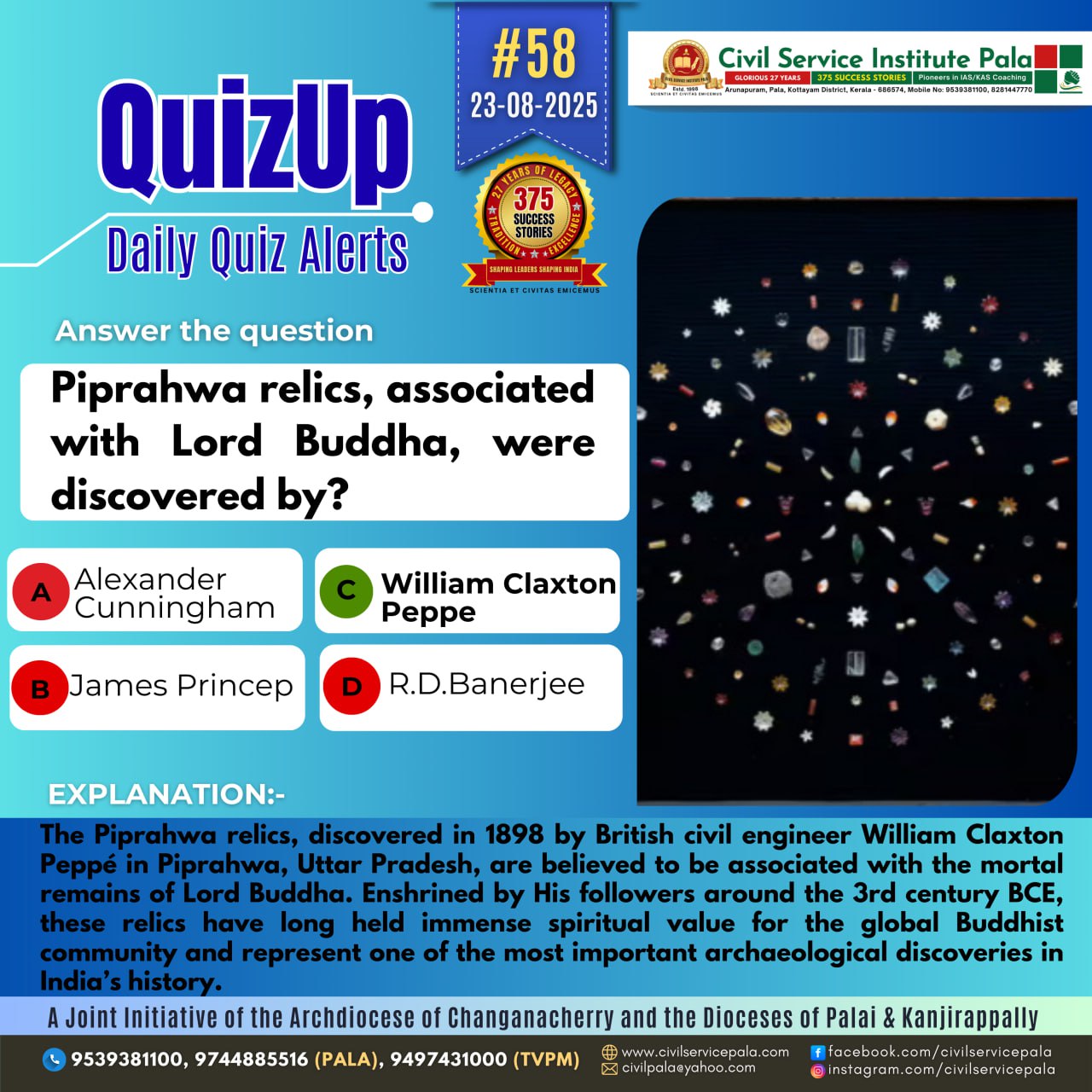
William Claxton Peppe
The Piprahwa relics are among the most significant archaeological discoveries related to Buddhism and the life of Gautama Buddha.
🔹 Location
Piprahwa is a village in Siddharthnagar district, Uttar Pradesh, India, near the Indo-Nepal border.
It is identified with the ancient city of Kapilavastu, the capital of the Shakya clan (to which the Buddha belonged).
🔹 Discovery
In 1898, a British landowner William Claxton Peppe conducted excavations at a large stupa (burial mound) in Piprahwa.
Inside a stone coffer, he found:
Several stone reliquary caskets (soapstone, crystal).
Bone fragments, believed to be the relics of the Buddha.
Jewels, ornaments, and other offerings.
🔹 Inscriptions
An important Brahmi inscription was found on one casket.
It mentioned that the casket contained the relics of the Buddha (Sakyamuni) and had been deposited by the Shakya clan.
This was taken as strong evidence that these relics were directly associated with the historical Buddha.
🔹 Distribution of Relics
After discovery, the relics were divided:
Some were sent to King of Siam (Thailand), later enshrined in temples across Southeast Asia (Myanmar, Sri Lanka, Japan).
A portion was kept in India (now in the National Museum, New Delhi).
🔹 Historical Significance
Confirmation of Buddhist Traditions: Buddhist texts mention that after Buddha’s cremation, his relics were divided among various kingdoms, including the Shakyas of Kapilavastu. The Piprahwa find supports this account.
Archaeological Value: One of the earliest inscriptions explicitly naming the Buddha.
Religious Importance: Considered sacred by Buddhists worldwide, relics were enshrined in stupas and venerated.
🔹 Modern Excavations
Later excavations (1970s–90s by Indian archaeologist K. M. Srivastava) uncovered more stupas and relics at Piprahwa and nearby Ganwaria, strengthening its identification with Kapilavastu.Source:https://indianexpress.com/article/long-reads/piprahwa-relics-india-up-plan-original-site-nepal-border-10202453/



